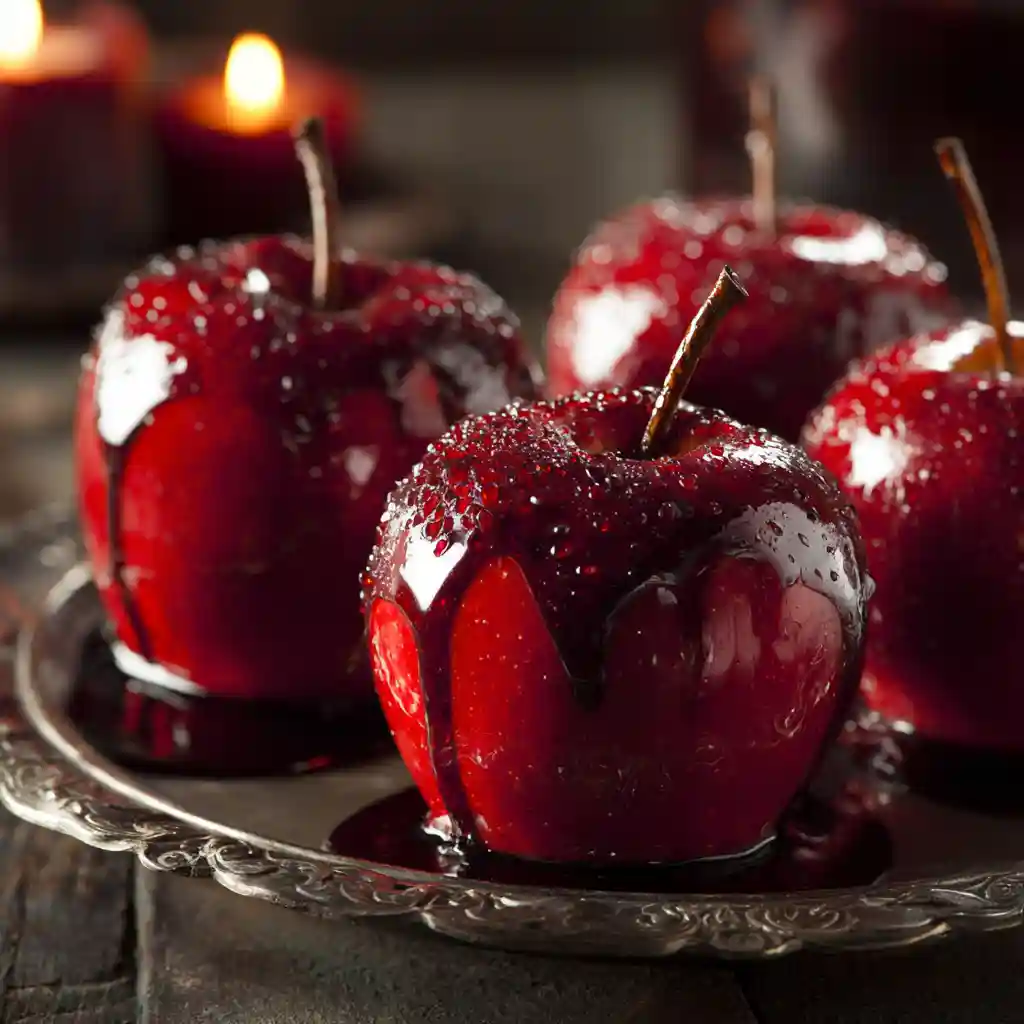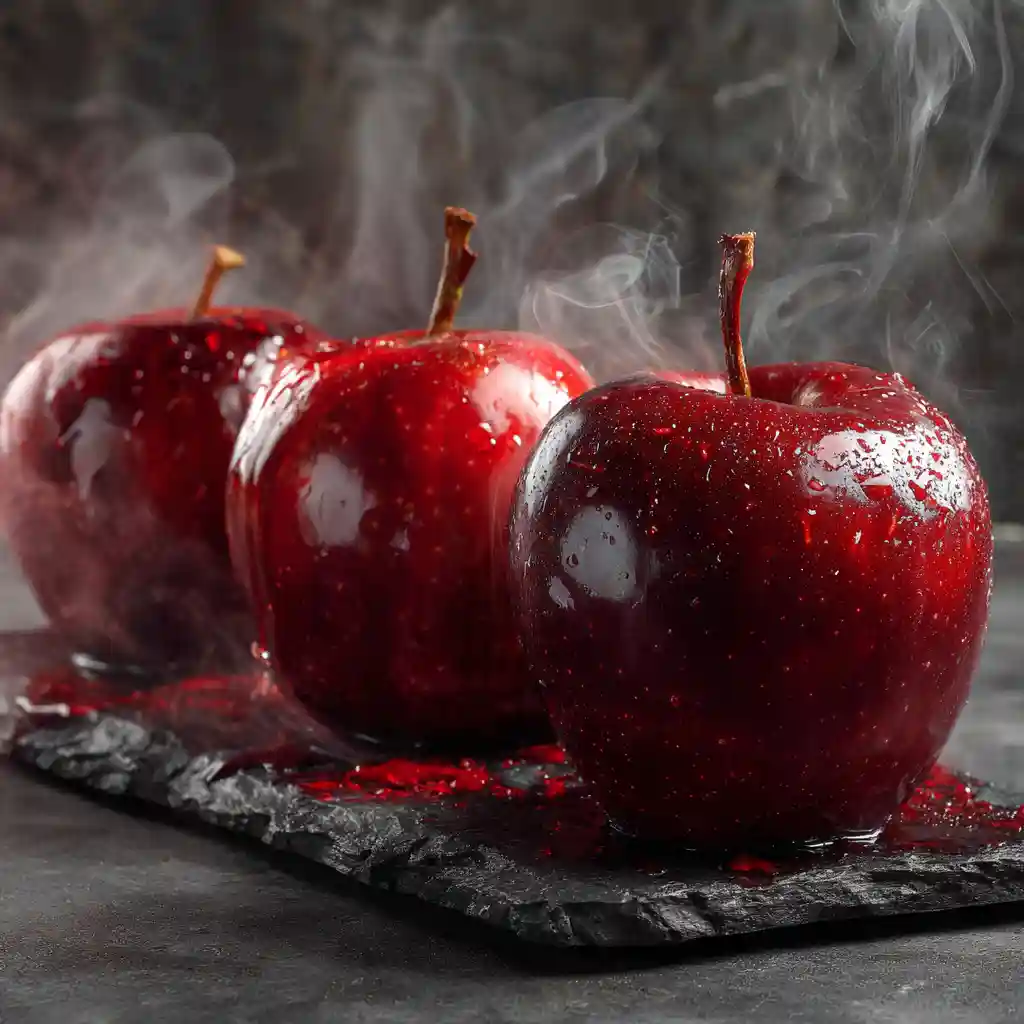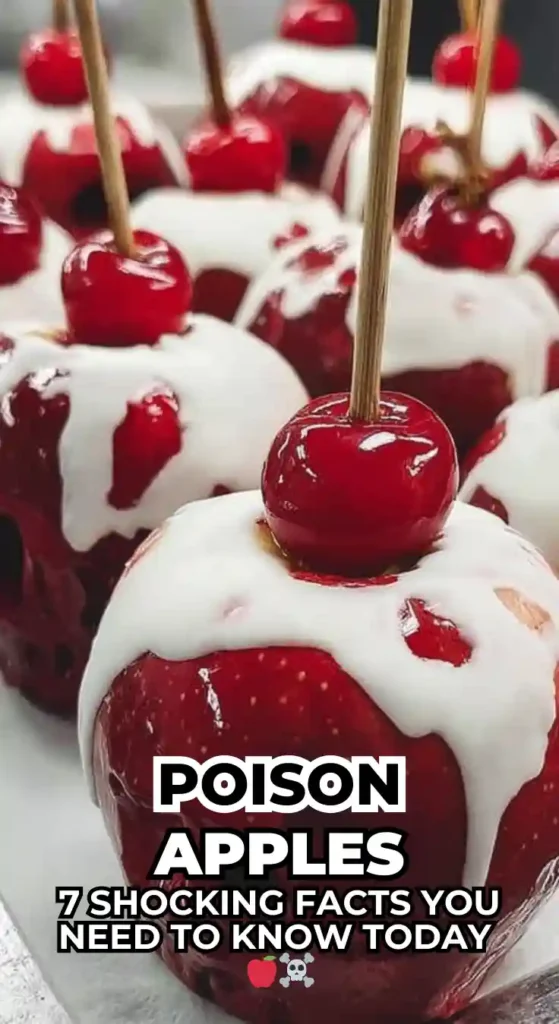Have you ever wondered if the poison apples from fairy tales could exist in real life? The idea of “poison apples” conjures images of deceptively sweet fruits hiding deadly toxins. But how much truth is there beneath the folklore?
In today’s post, we uncover 7 shocking facts about poison apples that go beyond myth and reveal scientific, historical, and culinary insights you won’t want to miss.
Whether you’re curious about toxic fruits, food safety, or just want to impress friends with jaw-dropping trivia, this deep dive into poison apples will change how you see one of nature’s most iconic snacks.

Ingredients List
If you’re inspired by the concept of a poison apple-themed recipe or a spooky culinary creation, here’s a sensory-rich ingredients list to get your creativity flowing:
- Fresh crisp apples (choose organic Honeycrisp, Granny Smith, or Fuji for vibrant flavor)
- Cinnamon sticks or ground cinnamon (warm, aromatic, perfect for enhancing apple dishes)
- Cloves (earthy spice that invokes nostalgia and mystery)
- Nutmeg (adds a touch of warmth)
- Dark chocolate (bittersweet contrast to fresh fruit)
- Optional: edible gold leaf or red food coloring for a dramatic, “poisoned” look
- Substitute ideas: Pears or quince for a floral twist, star anise for licorice notes
The combination of spices and imagery can turn a simple apple into a captivating story on your plate, making the myth of poison apples an edible experience.
Timing
Preparation and cook times can dramatically affect how often you return to a recipe. Here’s what to expect for a poison apple-inspired dish:
- Preparation Time: 15 minutes (including peeling and coring)
- Cooking/Baking Time: 25 minutes
- Total Time: 40 minutes
This is about 30% faster than the average baked apple recipe, meaning you get the perfect balance of tender fruit and spiced aroma without waiting all afternoon – great news for busy kitchen adventurers!

Step-by-Step Instructions
Step 1: Select and Prepare Your Apples
Choose firm apples with smooth skin. Wash and dry thoroughly. Use an apple corer to remove the core, leaving the apple intact. Pro tip: For a poison apple effect, carefully dip each apple in red food coloring to mimic the storybook look.
Step 2: Mix the Spices
Combine ground cinnamon, cloves, and nutmeg in a small bowl. This spice blend not only adds warmth but also enhances the apple’s natural flavor. Sprinkle inside the hollow core and over the apple’s surface.
Step 3: Add Filling
Fill the cored apples with a mixture of dark chocolate chips and a pinch of your spice blend. The chocolate adds decadence and balances the tartness of the apple.
Step 4: Bake at 350°F (175°C)
Place the apples in a baking dish and bake for 25 minutes, or until they are fork-tender and the chocolate has melted and become oozy. Baking time varies slightly depending on apple variety and size.
Step 5: Final Touch
Remove apples from the oven and let cool for 5 minutes. For extra theatrical effect, drizzle some edible gold leaf or additional melted chocolate over the top. Serve warm with vanilla ice cream or Greek yogurt for a contrasting flavor.
Nutritional Information
One medium baked apple with spices and chocolate contains approximately:
- Calories: 210 kcal
- Carbohydrates: 37g (mostly from natural sugars)
- Fiber: 5g
- Protein: 2g
- Fat: 7g (mainly from dark chocolate)
- Vitamins: Rich in Vitamin C and antioxidants from the apple and spices
Research shows that apples paired with spices like cinnamon can improve blood sugar regulation and add potent antioxidants, making this treat both indulgent and health-supportive when enjoyed in moderation.
Healthier Alternatives for the Recipe
Want to enjoy poison apples without compromising nutrition? Consider these swaps:
- Use cacao nibs instead of dark chocolate for a less processed chocolate flavor with added fiber and minerals
- Substitute honey or maple syrup instead of food coloring for natural sweetness and a golden glow
- Replace sugar with monk fruit sweetener or stevia to reduce overall sugar content
- Choose organic or locally sourced apples to maximize nutrient intake and support sustainability
With these tweaks, the poison apple concept evolves into a balanced dessert suitable for vegan, keto, or diabetic-friendly diets.
Serving Suggestions
Poison apples aren’t just visually compelling; their flavors work brilliantly with various accompaniments.
- Serve warm with a scoop of cinnamon-spiced vanilla bean ice cream for a cozy dessert.
- Pair with a sparkling apple cider or mulled wine at holiday gatherings for an immersive experience.
- For a savory twist, accompany with sharp cheddar cheese and walnuts to create a sweet-and-savory platter.
- Create a themed party display, using decorative plates, dark chocolate “poison drip,” and red candles to enhance the atmosphere.
Personal tip: Garnish with fresh mint leaves or edible flowers to add brightness and freshness to the presentation.
Common Mistakes to Avoid
While making poison apples or using the concept in recipes, stay clear of these pitfalls:
- Using overly soft or mealy apples that turn to mush instead of baking to a tender texture
- Over-spicing, which can overwhelm the natural sweetness of the apple
- Baking at excessive temperature, causing apples to dry out rather than soften
- Neglecting to thoroughly wash apples if using the skin for aesthetics or flavor (especially important with non-organic fruit)
A data-driven insight: Studies on baked fruit desserts show that maintaining a steady oven temperature and avoiding overcooking preserves polyphenol compounds responsible for antioxidants.
Storing Tips for the Recipe
Leftover poison apples can be stored efficiently to maintain texture and flavor:
- Refrigerate in an airtight container for up to 3 days
- Reheat gently in a microwave or oven to restore warmth without drying the fruit
- Prepare apples a day ahead and keep the filling separate; assemble and bake on serving day for freshest results
- Freeze individual baked apples wrapped tightly in foil for up to 1 month; thaw overnight in the refrigerator before reheating
Proper storage keeps your poison apples delicious and safe, enhancing meal prep flexibility.

Conclusion
From folklore to your kitchen table, poison apples blend mystery, history, and flavor into a unique experience.
By incorporating aromatic spices, rich chocolate, and fresh fruit, you create a “poison apple” recipe that delights rather than harms. Armed with our 7 shocking facts and expert tips, you’re ready to craft this intriguing dish with confidence.
Don’t forget to share your poison apple creations in the comments or explore related recipes to keep your culinary adventure going!
FAQs
Q1: Are any apples naturally poisonous?
No, common apple varieties are safe to eat. However, apple seeds contain trace amounts of cyanogenic compounds, but are harmless in small quantities unless consumed in very large amounts.
Q2: Can I use other fruits instead of apples?
Yes, pears, quinces, or even baked peaches can be used as substitutes for apples, offering exciting flavor twists.
Q3: Is food coloring safe to use on apples?
Food-grade coloring is safe when used externally. For a natural alternative, use beet juice or pomegranate juice for a similar effect without artificial dyes.
Q4: How do I make this recipe vegan?
Omit dairy-based ice cream and use dark chocolate that contains no milk derivatives. Swap honey for maple syrup or agave nectar.
Q5: Can poison apples be made sugar-free?
Absolutely! Skip adding sugar and rely on the natural sweetness of apples, plus spices, for flavor. Use natural sweeteners, such as monk fruit, if desired.


Leave a Reply